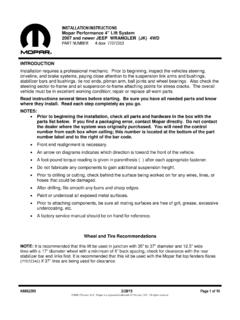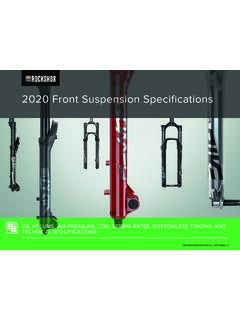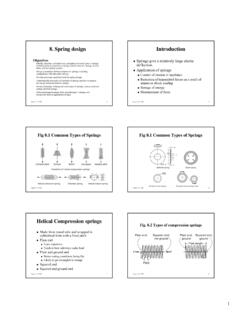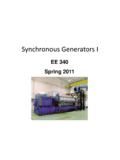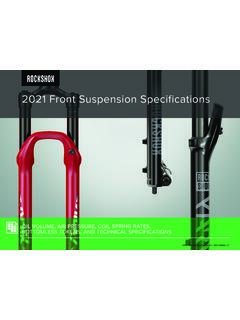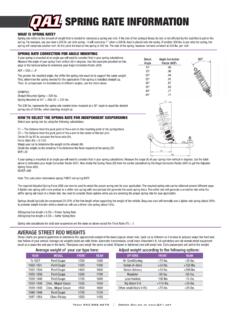Transcription of CHARACTERISTICS OF WOOL Fact Sheet
1 CHARACTERISTICS OF WOOLFact SheetDurability & resilienceResistance to flameFiber absorbencyChemical structureFeltingResistance to compressionDyeabilityDURABILITY AND RESILIENCE Each wool fiber is a molecular coil- spring making the fiber remarkably elastic. Nature has folded the chemicalpolypeptide chains back upon themselves in such a way that they act like acoiled spring which elongates when it is extended and retracts when it isreleased. This molecular crimp, along with the 3-dimensional fiber, allows woolfibers to be stretched up to 50% when wet and 30% when dry, and still bounceback to their original shape when stress is released. But be careful: When woolis wet the fibers are weaker. Recovery from stress takes place faster when thefiber is in a humid environment; that s why steaming a wool garment will freshen the fabric and why a steam iron is recommended for pressing flexibility of the wool fiber also makes it more durable.
2 A wool fiber can be bent back on itself more than 20,000 times without breaking, comparedto about 3,000 times for cotton and 2,000 times for silk. The natural elasticity of wool also makes woolen fabrics resistant to tearing. In addition, the outer skin of the wool fiber acts as a protective film, giving wool cloth improved resistance to ABSORBENCY wool is a hygroscopic fiber; it takes up moisture in vapor form. Tiny pores in the epicuticle make the fiber semi-permeable, allowing vapor to pass through to the heart of the fiber. wool can easily absorbup to 30% of its weight in moisture without feeling damp or capacity to absorb makes wool a temperature regulator because it can protect the body in both cold and warm conditions. wool always absorbsmoisture from the atmosphere of greater humidity and releases it to the drierenvironment as it creates a balance in moisture conditions. This characteristicmakes wool a versatile all-season absorbs perspiration; thus it keeps a layer of dry air next to the skinwhich, in turn, helps to hold in body heat.
3 As wool absorbs atmospheric moisture, the hydrogen bond of water is broken and chemically reacts with molecules of the wool to generate garments are therefore regarded as good protection against a condition that occurs when sudden drastic lowering of body temperature causes the body to lose heat faster than it can be same principle of moisture contact on the skin acts to protect againsthot weather as well. The body cools itself naturally with the evaporation of per-spiration. wool expedites this process by absorbing perspiration and keepingthe same dry air next to the skin. This is why wool clothing is worn throughoutthe desert regions of the world where it s hot during the day and cool at Resists wrinkleswool springs back quickly Resists soilingbecause the fiber is complex Is durablemulti-part fiber resists wear Repels moisturefiber sheds water Retains shaperesilient fibers return to size Resists flamesfibers will not support combustion Is comfortable in all seasonskeeps layer of air next to skinFELTS NATURALLY The physical structure of the outer scaly layer of the wool fiber contributes to wool s unique property of felting.
4 Under themechanical action of agitation, friction and pressure in the presence of heat and moisture, the scales on the edges of the wool fibers interlock, preventingthe fiber from returning to its original position. Felting shrinkage is felting property of wool is both an advantage and disadvantage. In a con-trolled situation the felting quality is called fulling or milling and creates a softerfinish for woven wool fabric. Felting is also an advantage because it provides fora wide variety of non-woven felt fabrics for hats and for industrial uses. Felting isa disadvantage because it makes the washing of untreated wool fabrics have been developed to prevent felting shrinkage, allowing woolgarments to be machine-washed. The SUPERWASH mark certifies that fabricshave been treated for machine-washability and dryability under strict standardsset by The wool Bureau, Inc. Technically, the process involves a mild chemicaltreatment applied to the fiber to form a microscopic film of resin that spreadsevenly over the fiber surface.
5 The film reduces friction and thus eliminatesentanglement. The resin can t be washed or worn off; it is held in place perma-nently by chemical adhesive DYE BEAUTIFULLY wool absorbs many different dyes deeply,uniformly and directly without the use of combining chemicals. wool is anamphoteric, which means it reacts with both acids and bases; thus it acceptsboth acid and basic dyestuffs. Dyes penetrate into the inner medulla core of thefiber where a chemical reaction occurs making the color change permanentexcept under extreme and prolonged fading TO FLAME Because wool contains moisture in each fiber,it resists flame without chemical treatment. Instead of burning freely whentouched by flame, wool chars and stops burning when it is removed from thesource of fire. wool is self-extinguishing. It will not support combustion; this iswhy wool blankets are recommended for use in extinguishing small STRUCTURE wool is a natural protein fiber that grows fromthe follicles of the sheep s skin.
6 It is like human hair in that it is composed ofkeratin-type protein. Chemically these proteins contain 5 elements: carbon,hydrogen, oxygen, nitrogen and sulfur. These 5 elements are combined into 19amino acids linked together in ladder-like polypeptide TO COMPRESSION Resistance-to-compression valuesare useful in assessing the suitability of wool for specific end uses. Resistance tocompression (R to C) is the force per unit area required to compress a fixedmass of wool to a fixed volume. Resistance to compression is related to fiberdiameter and the form and frequency of instance, low and medium R to C wools tend to be softer, more lustrous,more susceptible to felting, easier to process and produce strong fabrics. On theother hand, high R to C wools have a harsher handle, are resistant to felting andare resistance-to-compression studies conducted by Texas A&M Universityprove American wool is well-suited to produce the finest of fabrics as well aswool batting for the production of futons and other bedding materials.
7 Thesestudies confirmed that there is a good variety of wools available in the withlow, medium and high resistance to compression. The majority of the wool finerthan 28 micron in this test was analyzed as being in the middle resistance-to-compression range (53%). On the other hand, some 73 percent of the woolcoarser than 28 micron was evaluated to be highly resistant to ||CRCHHNO||CHCRHNC||OHCRD ivision American Sheep Industry Association, South Yosemite StreetCentennial, CO 80112-1414(303) 771-3500 Fax (303)
